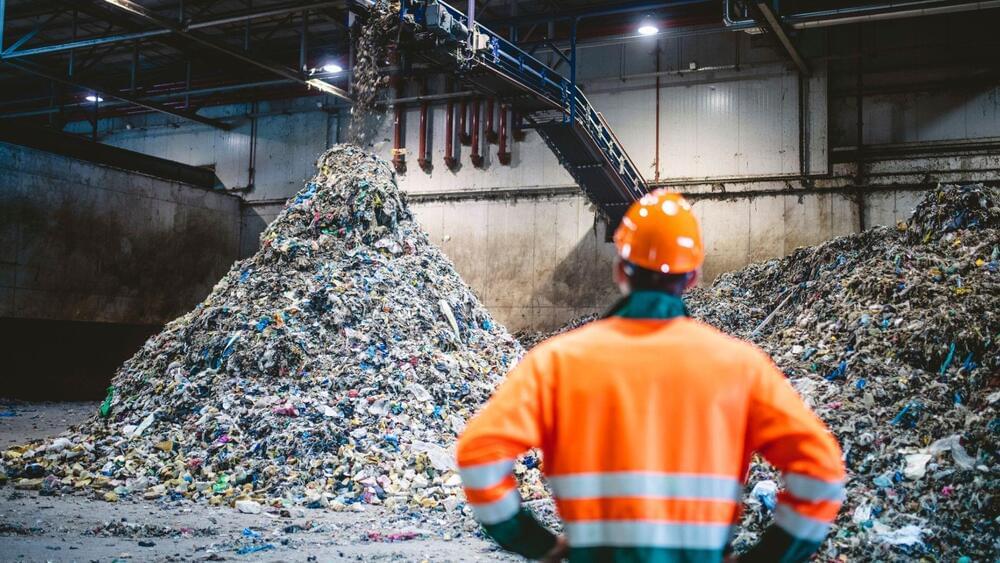Top Tesla investors are growing frustrated with billionaire Elon Musk’s focus on Twitter as the electric car company’s stock prices continue to fall this month.


Standing among solar arrays and power grid equipment at the National Renewable Energy Laboratory (NREL), you might hear a faint, distorted melody buzzing from somewhere. You are not hallucinating—that gray box really is singing the Star Wars Theme, or the ice cream truck song, or Chopin’s Waltz in A minor. Power system engineers are just having some fun with an NREL capability that prevents stability problems on the electrical grid.
Usually, the engineers send another kind of waveform through the inverters and load banks: megawatts of power and voltage vibrations at many frequencies. The purpose of their research is to see how energy devices and the grid interact—to get them “in tune” and prevent dangerous electrical oscillations that show up like screechy feedback or a booming sub-bass.
The engineers can do this analysis at high fidelity with NREL hardware using the lab’s advanced impedance measurement system, and they have also produced a commercially available software called the Grid Impedance Scan Tool or GIST that can do the same with simulated power on device models, allowing any manufacturer or grid operator to certify grid stability with renewable energy resources.

The supersonic aircraft startup parted ways with Rolls-Royce earlier this year.
Boom Supersonic, the company aiming to take commercial supersonic airliners back to the skies, now has plans to build a new proprietary engine.
Boom Supersonic finds Rolls-Royce replacements.
Boom Supersonic.
The company announced that its Overture supersonic plane would be powered by Symphony, a new engine that will be “designed and optimized” for the aircraft, as per a press statement.

Musk’s attention to Twitter is hurting his bread and butter.
Since September last year, Elon Musk has been regarded as the world’s richest person. The stock price of the electric vehicle-making company Tesla has been the sole reason behind his dramatic rise to the top. With Tesla stock dropping 50 percent value since the beginning of the year, Musk has now dropped to number two on the list of the world’s richest people, Bloomberg.
Getty Images.
In April, Musk announced his decision to buy out Twitter and take the social media company private to unlock its true potential. The timing of his offer could not be worse as the U.S. Federal Bank began tightening its fiscal policy to rein in inflation. Within days, Musk’s $44 billion offer seemed a price too high to pay, as the stock prices of tech companies began shrinking with higher interest rates.
MSM and Experts fail to see the logic in how Elon Musk is taking over Twitter. They think it’s chaos, a mess, he’s out of his depth. But Elon is just working AGILE, and AGILE always seems like a mess to onlookers used to traditional work!
The video describes Elon’s Agile Takeover of Twitter and shows the opportunity worth BILLION$ that Elon Musk has ALREADY unlocked.
Please consider supporting the channel:
🔹Join my PATREON for Ad-Free Early-Access to videos plus Patreon-Exclusive newsletter: http://www.patreon.com/ConnectingODots.
🔹Become a YouTube channel member: https://www.youtube.com/ConnectingTheDotsOK/join.
🔹Or CLICK the THANKS🙏 BUTTON ABOVE
🐦Follow me on TWITTER: https://twitter.com/ConnectingODots.
🔹PLEASE SHARE this video on Social MEDIA, LIKE and SUBSCRIBE
Your support means a lot!❤️
This book changed my life — Think and Grow Rich https://amzn.to/3Y582Kb.
–
▶️Tesla Agile Series: EXTREME Innovation at BREAKNECK Speed — https://t.ly/f_8_
▶️Cybertruck Engineering Analysis — https://t.ly/vEFP
▶️Viral miniseries: How GM Sold America — https://t.ly/z7X7
▶️Investing Series: https://t.ly/7lMe.
▶️The Hidden Tesla ETF — https://youtu.be/BYOwbIOV9pc.
▶️Gordon Johnson, the Real Story — https://youtu.be/cBqh3WqYon8
▶️Tesla’s Secret Army — https://youtu.be/6HyJDno7Mf0
▶️Tesla vs Apple Ecosystem — https://youtu.be/CaL6S2z90A8
▶️Business Moats vs Pace of Innovation — https://youtu.be/fEYJrixcn6I
Join this channel to get access to perks:
https://www.youtube.com/ConnectingTheDotsOK/join.
Contents:

The technology could help make EVs more affordable as well as easier to charge.
A collaboration between researchers at the Yokohoma National University in Japan and the University of New South Wales Sydney, Australia has led to the development of a new electrode material that can be used in solid-state batteries. Thus the electrode doesn’t diminish after multiple charges and discharge cycles and can help in manufacturing durable batteries for electric vehicles.
As the world is turning over to electric modes of transportation in its bid to reduce carbon emissions, the battery has become a focal area of development.
Black_Kira/iStock.
While high charging times make the shift to electric vehicles unattractive, as the crucial component, the battery must also be cheap enough to encourage EV adoption. Although progress has been made in developing lithium-ion batteries, solid-state batteries (SSBs) have also gained traction as an alternative.

This gold coating is the perfect weapon to kill fog.
What if there was a way to keep our eyeglasses, windows, and car windshields free of fog all the time? Of course, we can use those anti-fog sprays, but the problem with such applications is that we have to apply them again and again.
A team of researchers at the Swiss Federal Institute of Technology (ETH Zurich) has the perfect long-lasting solution to our fog problem. They recently filed a patent application for an ultrathin and 100 percent transparent coating that performs defogging (removing existing fog on a surface) and anti-fogging (preventing the formation of fog on a surface).



Environmentalists, however, argue that the process may not be a good thing.
University of Colorado researchers have conceived of a method of making useful materials out of some of the plastics that are inundating landfills everywhere, according to a report by the Colorado Sun.
The end result is a series of polycyanurate networks which have been used for decades in electronic devices, automobiles, circuit boards, the space industry and more.
AzmanJaka/iStock.
The novel process uses ethanol to break down plastics to their smallest molecules. Those molecules are then used as starting blocks to make a new plastic product equally as useful and durable as the recycled one.